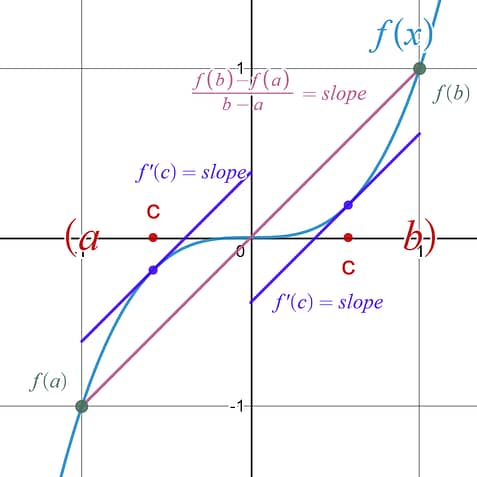Mean Value Theorem
Definition: Mean Value Theorem (MVT)
If the function is continuous on the closed interval [ a , b ] and differentiable on the open interval ( a , b ), then there is a number c such that a < c < b and .

Everyday Language:
Essentially what the Mean Value Theorem is saying is if you have an equation, , that is continuous (you can’t lift your pencil) and differentiable (there is a derivative value everywhere), then you are guaranteed this cool thing happens.
The cool thing that happens is that you are guaranteed that you can find an x-value , c , that is inside your x-interval , ( a , b ), so that the slope between those two x-interval endpoints, [ a , b ], , will be equal to the slope of the tangent line at that x-value , c , .
In the example graph above you can see that there are actually two c-values , x-values , in the interval ( a , b ), such that the slope at those points would be equal to the slope between the two endpoints. The MVT only guarantees you one x-value , but you could absolutely have multiple x-values that make the statement true.
